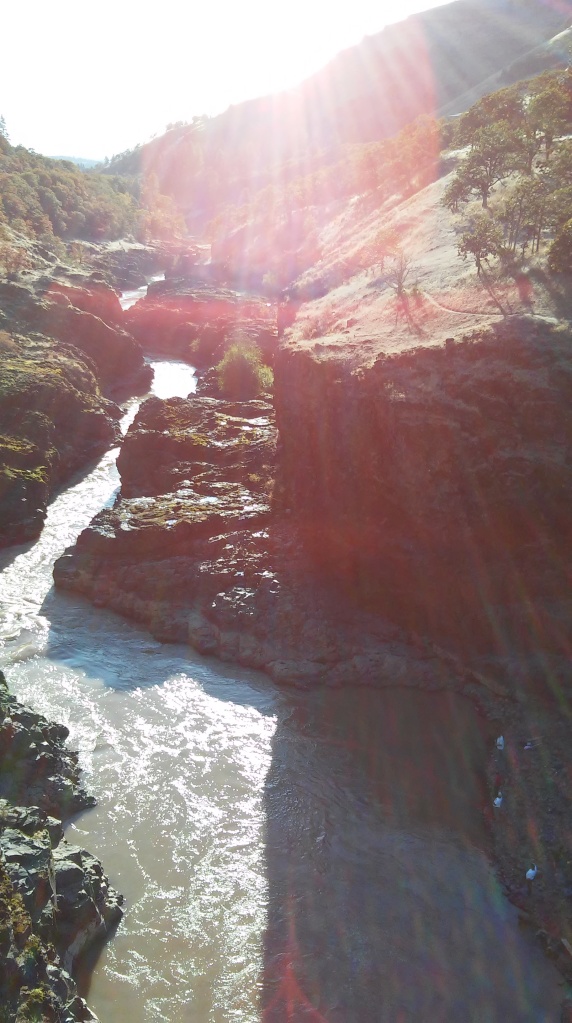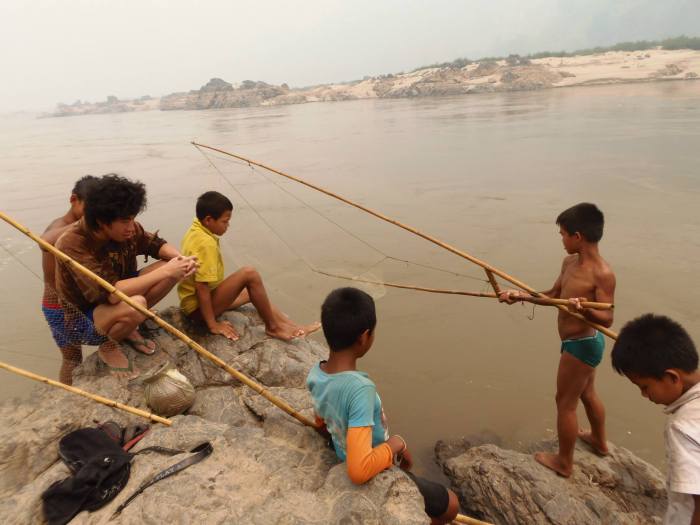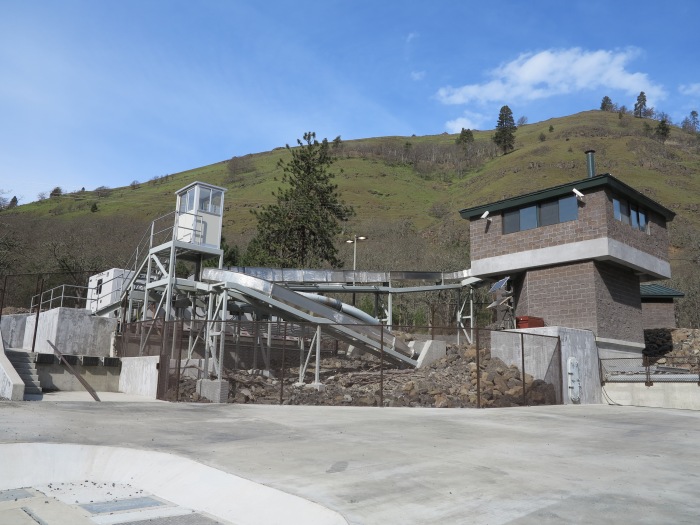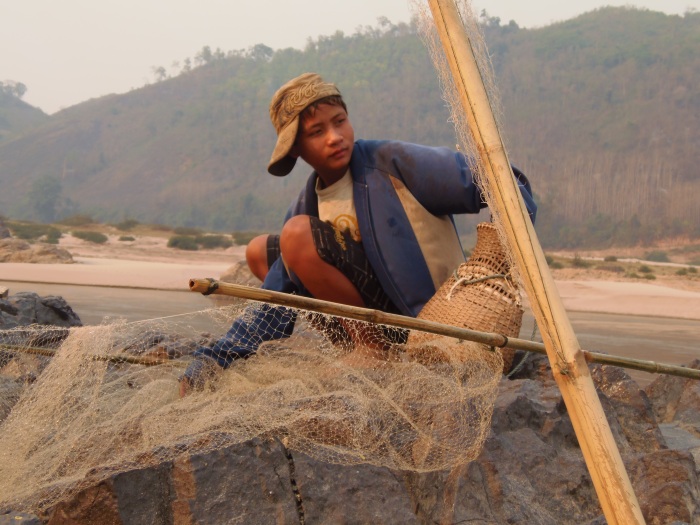Just published a new story on The Curious Human: a comparative piece about traditional dipnet fishing in the USA in the Columbia River basin and dipnet fishing in Laos in the Mekong River. The two communities - the Yakima Nation and the Laos - use traditional fishing practices to harvest migrating fish in fast flowing rivers. The comparisons between the communities who have no contact between them are quite interesting. The threat that progress has on these practices, in both places, through water development, new fishing tools and techniques, changing policies, and increased populations is similar. That the Yakima are still fishing traditional fishing grounds in the Klickatat River amid the modernized sterile world around them gives testament to how dipnetting is not only a useful technique, but a preferable one. Hopefully despite modernization and development in cultures like the ones compared in Laos, will also retain their traditions and uses of the river. In the case in Laos, it will have to be in a different part of the river due to the related flooding of the area after the Xayaburi Dam is complete.
Check out The Curious Human for similar compelling stories.




Check out The Curious Human for similar compelling stories.
Traditional Fishing: 2 Cultures, 2 Rivers

KLICKATAT RIVER IN WASHINGTON. NON-NATIVE FISHERS (LOWER RIGHT) USE LINE AND HOOK FROM THE SHORE. © JENNIFER VEILLEUX 2014
I recently took a camping trip in the Columbia River Gorge, a few hours from where I live in Oregon. Summer is ending, the days are getting shorter, and the salmon have returned. Fishermen and hunters fill riverside campsites. Boats start their engines about 4:00 a.m. and gear is prepared the night before. The salmon are swimming upstream to spawn.
I had no real plan or agenda for my time in the Gorge. I had a vague timeframe to get back home. I thought about hiking the waterfalls. Instead, I pulled off the highway to see the visitor’s center at The Dalles dam. The center was closed, but a man in a white pickup truck pulled up while I was standing in the empty parking lot. He told me he is from the Umatilla Reservation and works as a fish biologist for the Warm Springs Reservation. After a long conversation about lamprey, the dams, and the local tribal rights, he said, “If you have time, go over the bridge here [from Oregon to Washington over the Columbia River]. Drive west on the Washington side of the river. You will come into a small town of Lyle. Take a right where you see a sign for the Klickitat Trail. About 2 miles up the road you will see a two bridges, one is a footbridge. Stand on the bridge and look down. There, you will see the Yakima People fishing for salmon using traditional dipnets in the Klickitat River. It is one of the only places left in the Columbia River basin where Native People fish like this. You have to see it if you have never seen it before.”
I headed over the river, following his directions. I found the Klickitat Trail sign, drove up the road to the two bridges. I got out and looked over the edge of the bridge. There I found the deep ravine of the upper Klickatat River. I saw far below in a steep sided rock gorge, two men, one young, one old, fishing with long poled nets.
The men took turns fishing. They were tied into a rope system by the waist, attached the the rocks behind them. I watched one man pull out a beautiful huge silver salmon. I noticed that the dip net had closed around the fish. The man brought the fish out of the water, hauled it onto the rocks, and took it from the netting. The fish flapped with incredible strength, beating the air and rocks with its tail. The man beat it over the head until the flopping turned into vibrating fins and finally into no motion. The fish, still, was shifted into a black bag waiting on the rock shelf.
The next man roped in. I watched as he patiently pulled his net on the long pole through the water. With each pass, the net began strung along the entire hoop and came out all bunched up at the far end. Each pass necessitated the need for the netting to be restrung around the hoop.

SYL SPINO OF THE YAKIMA TRIBE HOLDS A 9 FOOT DIAMETER DIPNET. KLICKATAT RIVER, LYLE, WASHINGTON © JENNIFER VEILLEUX 2014
Syl Spino, a man from the Yakima tribe, got out of his car where he’d been watching me and approached to ask, “have they caught anything yet?” I said “yes, one.” He joined me to watch the two men below us fishing in silence. After ten minutes of this we started talking about the dip netting tradition.
Syl said he had just given a demo to his granddaughter’s class at school on the tools for dip netting. As he explained, the older man of the pair pulled in a fish with a bit of a struggle. It was huge. He did the same process as the young man had done before him. We watched and talked as he hauled in fish after fish. I speculated that there must have been a group of them running together upstream.
Syl offered to bring me to his car to show me the hoop, the metal netting material, the net making tool, and the needle that threads the netting. He had a wooden needle his grandfather made, and a replica metal needle he had made from the model. He wasn’t as happy with the replica. Syl explained that each net must be made of these separate parts and how much each piece of material costs. The hoop itself is fixed to a wooden pole. The wooden pole is fitted to a long aluminum pole. The poles can be 30 to 40 feet in length. I held the hoop to feel the weight and thought about the metal netting, the aluminum pole. “Do many women fish?” I asked. “There are a few,” he told me. Each fish weighs 25 to 35 pounds. No wonder why the men were roped in. I asked, and he explained it is a law that fishermen must rope in.
Syl suggested he could take me up some dirt roads to see a fish passage facility where his son works. The facility keeps track of the fish species, sex, and whether the Klickitat River fish returning to spawn are wild or farmed. Farmed fish have a clipped fin. The facility is new, a project between the Federal government and with the local support of tribal research on the migrating species upon which they traditionally depend. There are no catch limits for the Tribes. There are designated fishing areas, such as the one where we watched the fishing, where non-natives are not supposed to fish.

LAO FISHERMEN FISHING WITH BAMBOO DIP NET MEKONG RIVER, LAOS, PDR © JENNIFER VEILLEUX 2013
The dipnet technique reminded me of similar fishing in the Mekong River that I learned about and even tried in Laos during my Xayaburi Dam field research. In a Lao village, I spoke with and interviewed fishermen about their livelihoods. One man taught me to hold and fish with a traditional bamboo dipnet. The net was pretty large and I thought a bit unwieldy. I didn’t catch anything, but enjoyed the meditative rhythm, and the possible chance of a catch with each pass. The fish the Lao fishermen were after were fingerling sized fish, though they explained that there were different fish migrating along the shore at different times.
I find it curious that indigenous traditional cultures, two continents apart, have such similar fishing tools. Both communities in North America and Southeast Asia are using dipnets when the water is low, fishing from rocky outcrops, patiently scooping downstream with the current. Both the Lao village fishermen and the Yakima Nation fishermen are using materials purchased outside their community to build their nets. This type of fishing can be dangerous in both places—told to me during interviews with the Lao fishermen and apparent with the rope safety the Yakima fishermen are using. Both communities wait for the seasonal cycle fish migration, know when the fish migration should be depending on the rain, moon, temperature, water level, season and a slew of other triggers I know nothing about to predict the presence of the fish.
And in both communities, an ocean apart, fishermen are doing something taught to them by their grandparents, an activity they will teach their grandchildren.
However, traditional fishing, just like the fish themselves, is under pressure from modernization, progress, and development. Why would people still use the traditional dip netting process when more modern forms of fishing may yield a larger catch, an easier haul? What will happen to these traditions when there are no fish to migrate in a particular tributary, an area slated for traditional fishing? What will happen when younger generations decide that trolling in the main Columbia River is the only way to fish the salmon? What will happen when dams are installed in the Mekong River and fishing areas are flooded and lost?

LAO FISHERMAN USING BAMBOO DIPNET IN THE MEKONG RIVER DURING DRY SEASON MEKONG RIVER, LAOS, PDR © JENNIFER VEILLEUX 2013
I breathed deeply before I drove away at sunset. I thought, here, just a few miles from the Columbia River – that endless migration of barges, cars, trains, fish, people, and water—here is a stillness, and a silence. Here is a tradition that reaches back through past time and I hope reaches well into future time—simple relationships between man and river, man and fish, river and fish.
Perhaps the presence of the Yakima Nation, the young man with the older man fishing with the dipnets is a sign of something persisting. This traditional practice has outlasted changes. There are still areas where modern development impacts haven’t completely obliterated the ebb and flow of water, the cycle of returning fish, and traditional knowledge and fishing practices.




